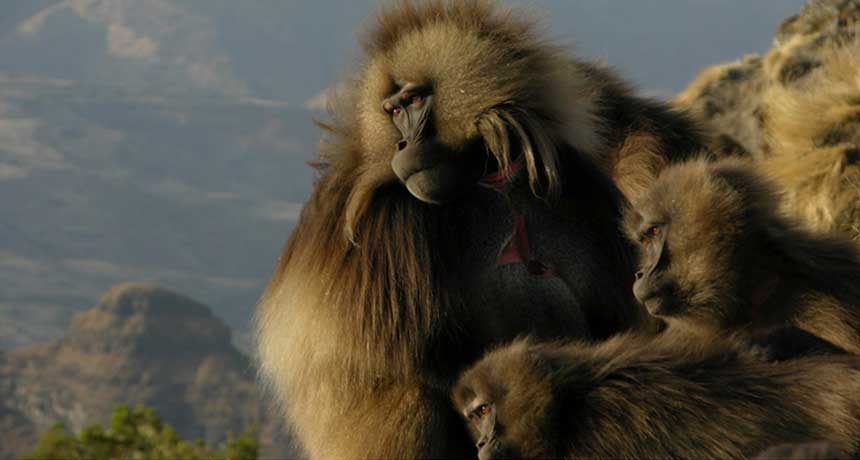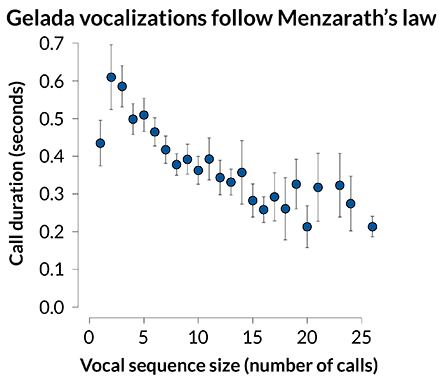Gelada monkeys know their linguistic math
Ethiopian species’ calls are shorter when part of long sequences, study finds

MONKEY TALK The vocalizations of gelada monkeys follow a mathematical principle seen in human language, shedding light on language evolution, new research suggests.
Thore Bergman/Univ. of Michigan
The grunts, moans and wobbles of gelada monkeys, a chatty species residing in Ethiopia’s northern highlands, observe a universal mathematical principle seen until now only in human language.
The new research, published online April 18 in the Proceedings of the National Academy of Sciences, sheds light on the evolution of primate communication and complex human language, the researchers say.
“Human language is like an onion,” says Simone Pika, head of the Humboldt Research Group at the Max Planck Institute for Ornithology in Seewiesen, Germany, who was not involved in the study. “When you peel back the layers, you find that it is based on these underlying mechanisms, many of which were already present in animal communication. This research neatly shows there is another ability already present.”
One of those mechanisms is known as Menzerath’s law, a mathematical principle that states that the longer a construct, the shorter its components. In human language, for instance, longer sentences tend to comprise shorter words. The gelada study is the first to observe this law in the vocalizations of a nonhuman species.
“There are aspects of communication and language that aren’t as unique as we think,” says study coauthor Morgan Gustison of the University of Michigan in Ann Arbor. Human language first strings together different sounds, then adds layers of syntax and grammar to convey meaning. Gelada communication doesn’t appear to have syntax or grammar. However, Gustison says, the monkeys “have this underlying structure that allows them to maybe have a more complex way of communicating with one another.”
Gustison and colleagues analyzed more than 1,000 vocalizations from 57 wild male geladas (Theropithecus gelada) and found that longer vocal sequences are made up of shorter individual calls. But when sequences become shorter, the same type of individual calls become longer, which indicates that gelada communication may conform to Menzerath’s law to compress information.
Geladas live in groups of up to 1,000 or more individuals and often “talk” over each other. With one of the most complex vocal repertoires of all nonhuman primates, vocalizing information in a shorter amount of time may ensure that geladas’ messages are not interrupted, the researchers say. Exactly what information the monkeys compress remains a mystery.
The gelada isn’t the only species that shares language precursors with humans: Dolphins, bats, marmosets and macaques have vocal sequences that appear to compress information through other linguistic properties. Gustison and colleagues plan to identify other species that may also use Menzerath’s law.
Although intriguing, the new research does not provide the missing link between animal vocalizations and complex human language, Pika says. But knowing in finer detail what’s unique about human language and what’s shared with other species helps researchers better understand language’s origins.








